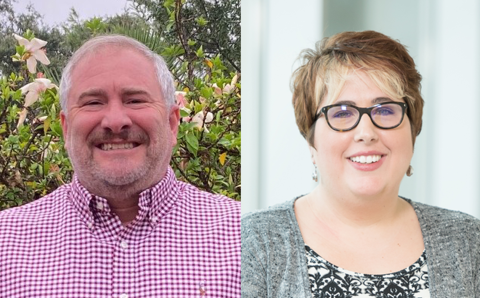On Sept. 1, 100 monarch butterflies flew from envelope enclosures into the freedom of King Edward Park in Brighton, Ont., winging their way on a migration to Mexico. The release of the tagged insects is a yearly undertaking by local researcher Don Davis. For two years in a row it has also become a symbol of letting go for members of several grief support groups at Fellowship Christian Reformed Church in Brighton.
“There has been so much death that our community has faced and the world has faced,” said Darlene Bunn, one of the peer leaders of a Fellowship CRC grief group. “Our rituals that we usually lean on to help us through these things have not been available to the same extent as they used to be, because of the restrictions that COVID has brought, and I just felt it was a good opportunity for people to come together and just share.”
Posters announcing the event welcomed people to “The Butterfly Release, honoring the death of loved ones” and noted community losses of Indigenous children and deaths from COVID-19. Bunn said about 90 people attended the event, including the town’s mayor. The program lasted just over an hour and included a prayer by the church’s pastor, Ryan Braam; words from Bunn, who spoke about the particular losses of COVID—her mother died from the illness; and words recognizing the renewed griefs of this summer when unmarked graves of Indigenous children were confirmed near grounds of former residential schools.
Related: Canadian Churches Remembering With Indigenous Community (July 23, 2021)
Winnie Visser, the church’s part-time director of congregational life, said five people from the community have registered for the next eight-week session of Good Grief support. Visser has served in that role (originally called congregational care coordinator) since 2012 and she helped to form the church’s first support group about seven years ago. A series of significant, traumatic deaths among congregation members sparked the need, and a pastor from a neighboring town, with experience in bereavement counseling, mentored the first leaders. Shortly after that the church began running new groups twice a year. Visser said many of the groups that have met over the years continue to connect and support one another.
Bunn went through the eight-week experience twice as a participant before becoming a group leader. She attended while her husband was living with cancer, “to figure out how to do it properly—how to say goodbye properly and to go through this grief in the least painful way possible,” she said. “And of course I learned there wasn’t any easy route through this, and after my husband passed, I went back.”
Visser said, “When we’re grieving, we’re all sad and we’re all hurting. Some people learn about faith in these grief groups because they hear other people talk about faith, and I think sometimes that people with faith learn about different ways in which the community expresses their grief. … It’s a sacred place to be able to walk alongside people.”
The butterfly release was just one public way to do that. Bunn said she is related to Davis through marriage and asked him to prepare the event for her small group in 2020, adapting what is usually prepared as an educational experience. “We were at a point where we were looking at transitioning into ‘what do our lives look like without our loved ones?’” Bunn said. She saw this as “a good healing process to be able to say goodbye by releasing a butterfly.”
Visser said, “This year we decided to go more public with the release because we always have in mind that this is an outreach—we want it to be for the community as much as for our own congregants.” Bunn said they intend to repeat the event every year.
About the Author
Alissa Vernon is the news editor for The Banner.








